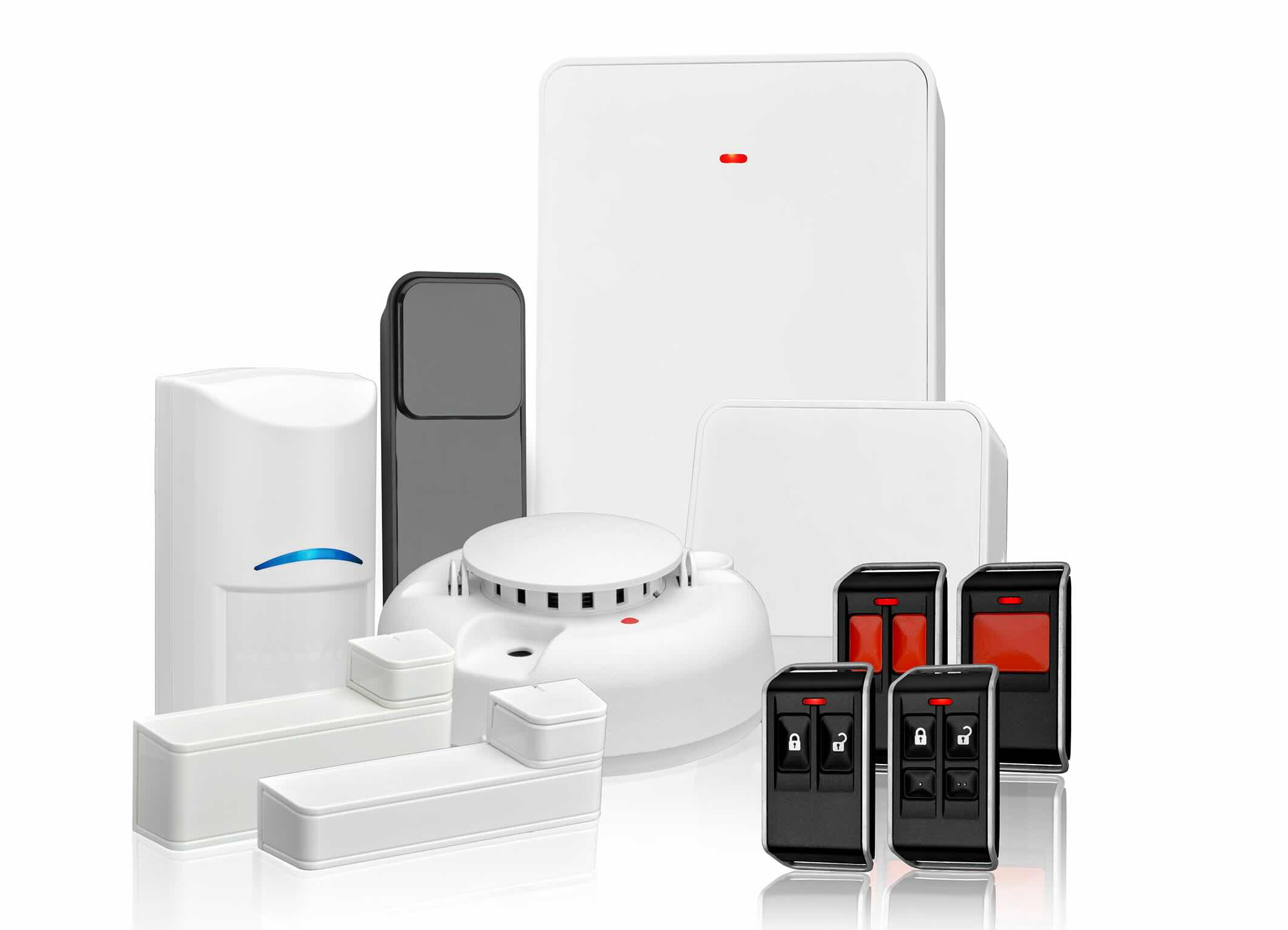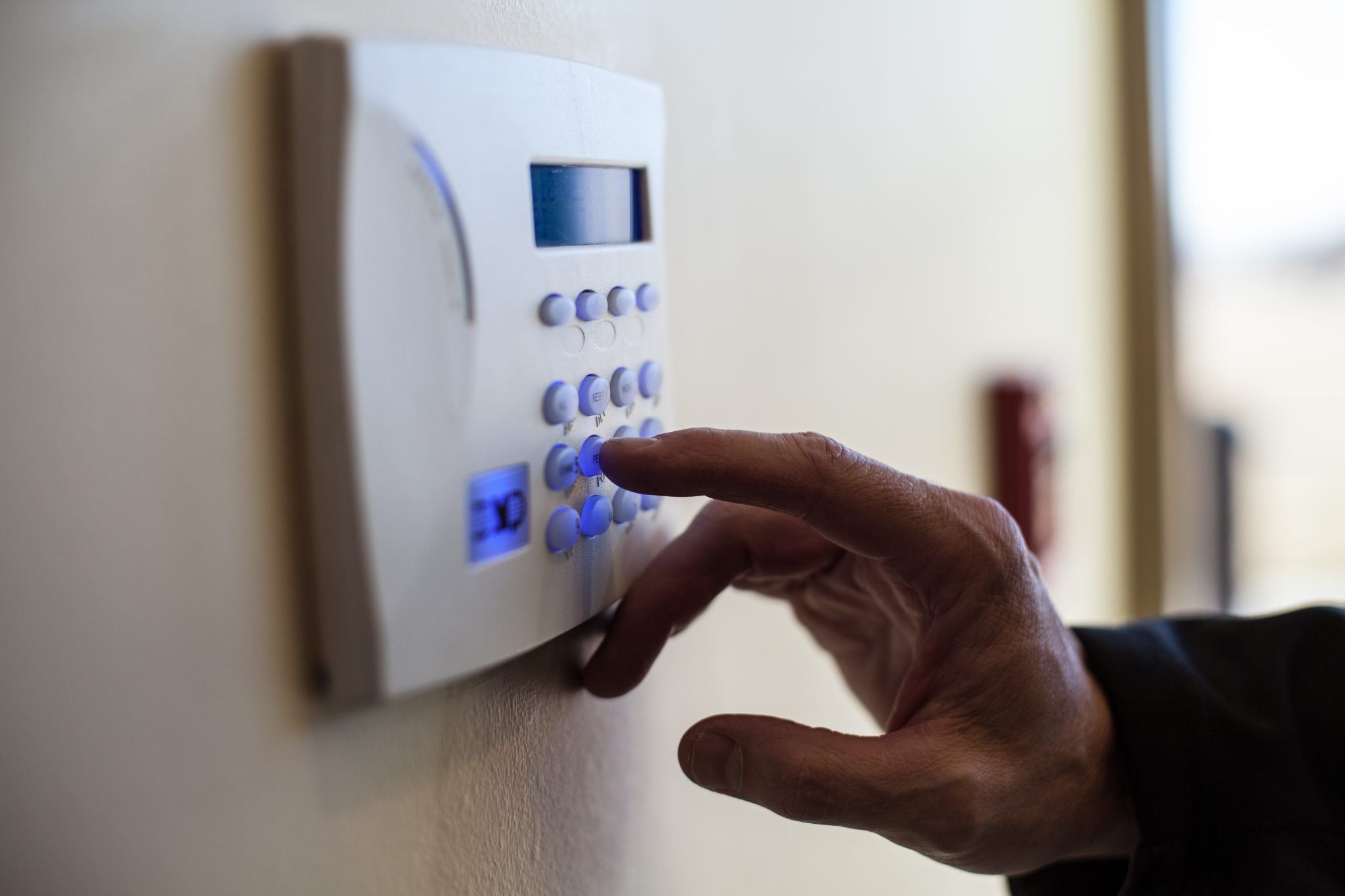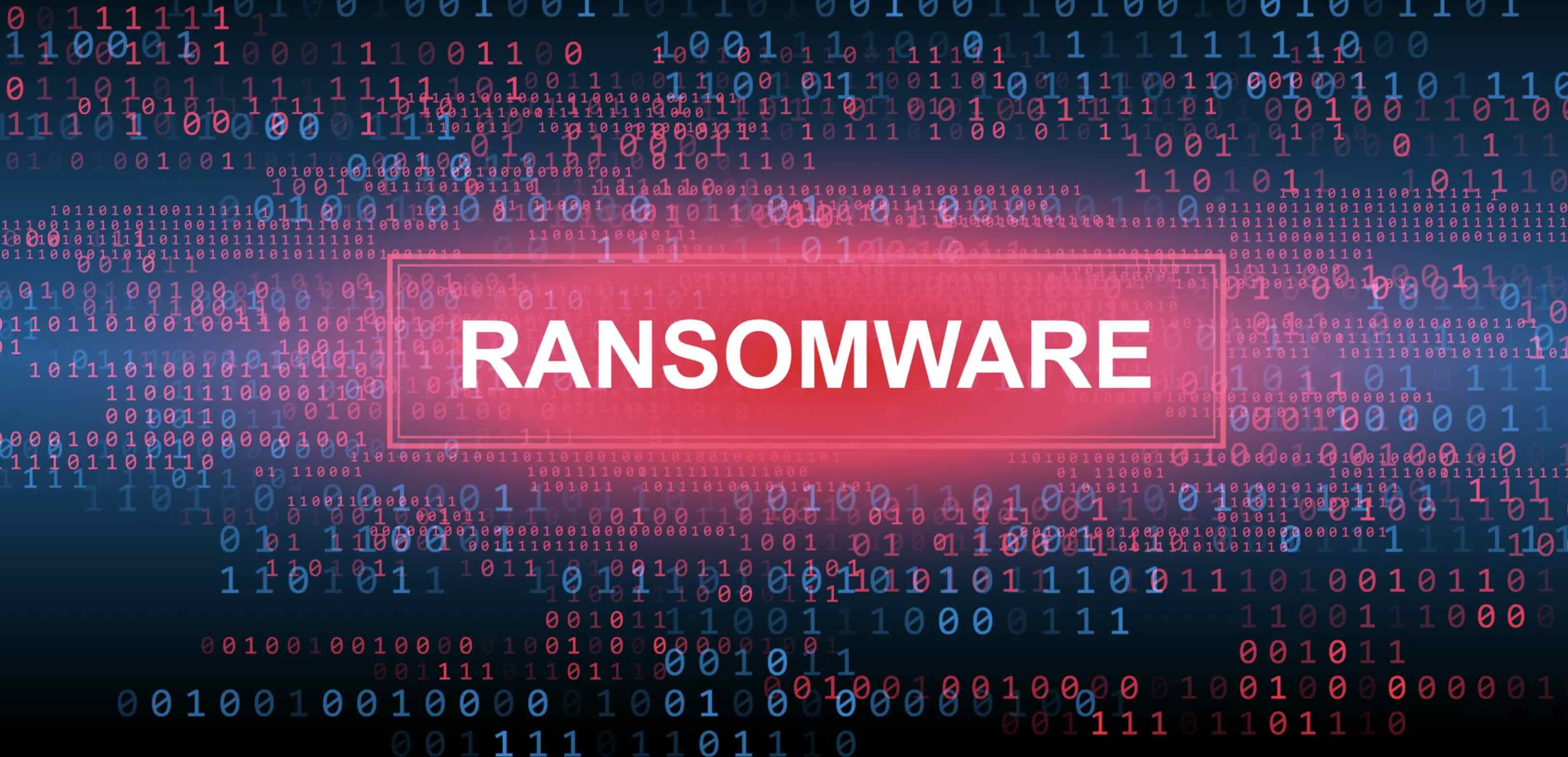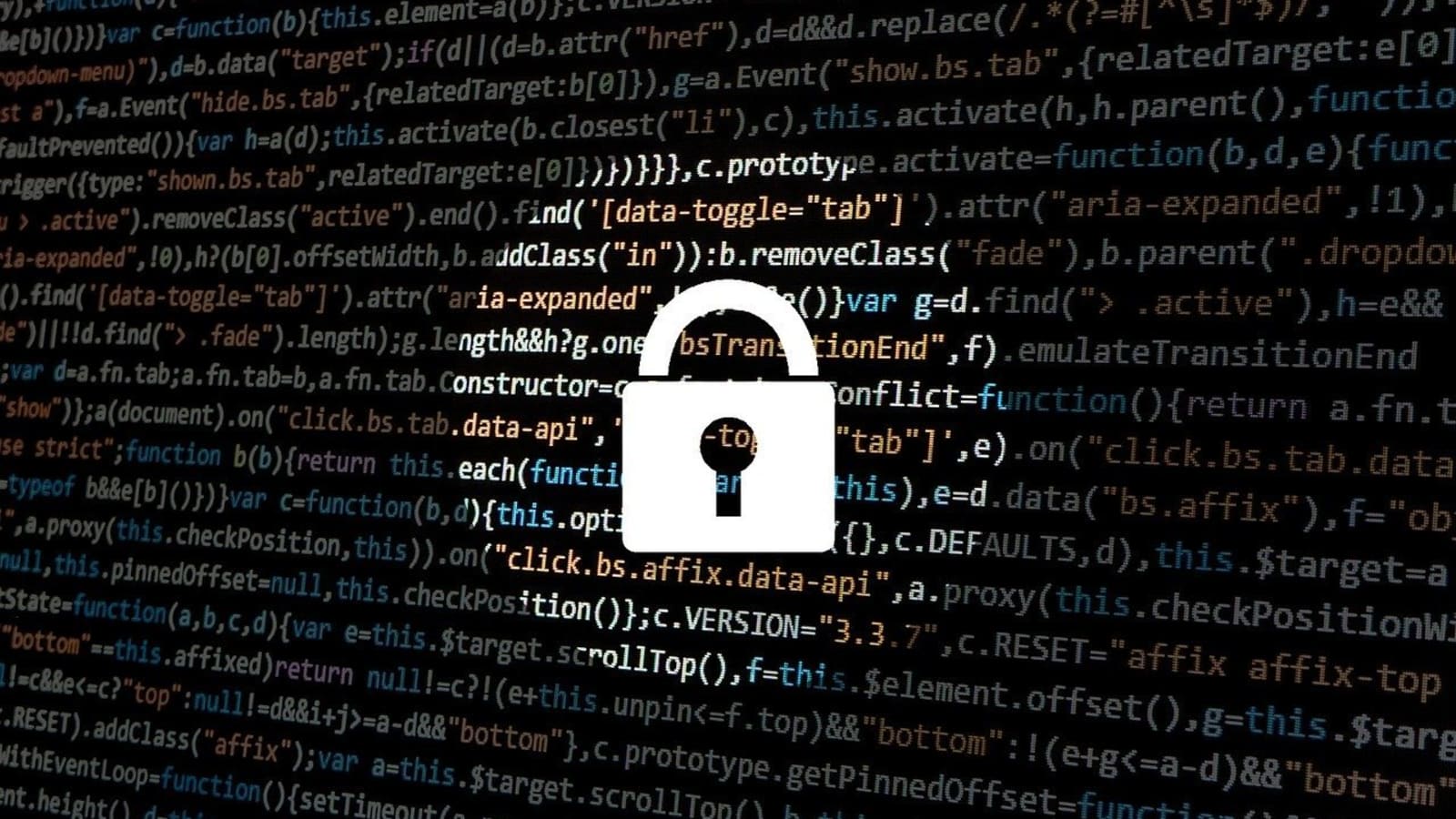Home>Home Security and Surveillance>Where Can You Install An Intrusion Detection System


Home Security and Surveillance
Where Can You Install An Intrusion Detection System
Modified: October 21, 2024
Looking to enhance your home security and surveillance? Find out where you can install an intrusion detection system and protect your property today.
(Many of the links in this article redirect to a specific reviewed product. Your purchase of these products through affiliate links helps to generate commission for Storables.com, at no extra cost. Learn more)
Introduction
When it comes to protecting your home or business, having a reliable intrusion detection system (IDS) is crucial. An IDS is designed to detect and alert you to any unauthorized entry or activity on your premises, providing you with a sense of security and peace of mind. But where exactly should you install an IDS?
The placement of an IDS depends on several factors, including the type of property, the level of security required, and the specific vulnerabilities that need to be addressed. In this article, we will explore various locations where you can install an IDS to maximize its effectiveness.
Whether you are looking to secure your home, office, retail store, industrial facility, government building, educational institution, healthcare facility, transportation system, or critical infrastructure, we have you covered. Let’s dive in and discover the best locations for installing an intrusion detection system.
Key Takeaways:
- Protect your home by installing an intrusion detection system at main entry points, windows, basement, and with security cameras for added protection.
- Safeguard your office with intrusion detection systems at main entry points, server rooms, conference rooms, and integrate with video surveillance for enhanced security.
Home
When it comes to securing your home, an intrusion detection system is an essential component of your overall security strategy. It helps protect your loved ones and your valuable belongings by alerting you to any unauthorized entry attempts or suspicious activities. Here are some key areas where you should consider installing an IDS in your home:
- Main Entry Points: Install door and window sensors at all main entry points, such as front and back doors, as well as first-floor windows. This will detect any attempts to enter your home without authorization.
- Garage: If you have an attached garage, make sure to install an IDS here as well. Accessible garage doors can be vulnerable entry points for intruders.
- Basement and Attic: These areas are often overlooked but can be attractive targets for burglars. Install sensors in the basement and attic to detect any unauthorized access.
- First-Floor Windows: Apart from the main entry points, consider installing IDS sensors on all accessible first-floor windows. These windows are commonly targeted by intruders who are looking for an easy way to gain entry.
- Interior Motion Sensors: Place motion sensors in key areas of your home, such as hallways and common areas, to detect any movement when the house is supposed to be empty.
- Security Cameras: In addition to an IDS, consider installing security cameras in strategic locations around your home. This will provide visual documentation of any suspicious activity and can aid in identifying intruders.
These are just a few examples of where you can install an IDS in your home. It is important to assess your individual property and security needs to determine the most optimal placement for your intrusion detection system. Remember to also consider integrating your IDS with other security measures, such as a security alarm system and 24/7 monitoring service, for enhanced protection.
Office
Securing your office is essential to ensure the safety of your employees, protect sensitive information, and prevent unauthorized access to restricted areas. An intrusion detection system (IDS) plays a crucial role in office security by detecting any potential threats. Here are some key areas where you should consider installing an IDS in your office:
- Main Entry Points: Install IDS sensors on all main entry points, such as entrances and exits, to detect any unauthorized entry attempts.
- Server and IT Rooms: These areas house critical infrastructure and valuable data. Installing an IDS in server and IT rooms will help protect against unauthorized access to sensitive information.
- Conference Rooms: Conference rooms often contain valuable equipment and confidential discussions. Consider installing IDS sensors to detect any unauthorized entry or suspicious activities within these areas.
- Executive Offices: Executive offices may contain sensitive and confidential information. Installing an IDS in these areas can help prevent unauthorized access and protect valuable assets.
- Restricted Areas: If your office has restricted areas, such as storage rooms or file cabinets containing sensitive documents, install IDS sensors in these locations to ensure that only authorized personnel can access them.
- Common Areas: Place motion sensors in hallways, break rooms, and other common areas to detect any unexpected movement outside of regular office hours.
- Security Control Room: If you have a dedicated security control room in your office, ensure that it is equipped with IDS monitors to provide real-time monitoring and response to any detected threats.
Remember, it is important to conduct a thorough security assessment of your office to identify any vulnerabilities and determine the most suitable locations for installing an IDS. Additionally, consider integrating your intrusion detection system with other security measures, such as video surveillance cameras and access control systems, for a comprehensive office security solution.
Retail Stores
Retail stores are prime targets for theft and burglary due to the presence of valuable merchandise. Implementing a robust security system, including an intrusion detection system (IDS), is crucial to protect your retail store against unauthorized access. Here are key areas where you should consider installing an IDS in your retail store:
- Main Entry Points: Install IDS sensors on all main entry points, including front and rear entrances, to detect any unauthorized access attempts.
- Point-of-Sale (POS) Area: The POS area is where cash registers and valuable transactions take place. Placing IDS sensors in this area can help identify any suspicious activity or breach attempts.
- Inventory Storage: If your store has inventory storage areas, such as stockrooms or warehouses, it is crucial to install IDS sensors in these locations to detect any unauthorized access or theft.
- High-Value Merchandise Displays: If you have high-value items on display, consider installing IDS sensors that can detect any tampering or attempts to steal these items.
- Back Office: The back office often contains important documents, employee records, and sensitive information. Installing IDS sensors here can help prevent unauthorized access and protect the confidentiality of these materials.
- Changing Rooms: Changing rooms are susceptible to theft and other illicit activities. Installing IDS sensors or cameras in these areas can help deter such behaviors and provide evidence in case of any incidents.
- Emergency Exits: Although emergency exits should be easily accessible for safety reasons, it is important to install IDS sensors that can differentiate between emergency exits and unauthorized access attempts.
- Perimeter Protection: Consider implementing an IDS system that covers the perimeter of your retail store, including windows, doors, and possible entry points.
Additionally, integrating your IDS with other security measures, such as video surveillance cameras, access control systems, and security guards, can provide comprehensive protection for your retail store. Conducting regular security assessments and staying updated with the latest security technologies can help ensure the effectiveness of your retail store’s security system.
Industrial Facilities
Industrial facilities, such as manufacturing plants, warehouses, and distribution centers, often house valuable equipment, materials, and sensitive processes. Therefore, implementing a comprehensive security system, including an intrusion detection system (IDS), is crucial to safeguard these facilities from theft, vandalism, and other security threats. Here are key areas where you should consider installing an IDS in your industrial facility:
- Main Entry Points: Install IDS sensors on all main entry points, such as gates, entrances, and loading docks, to detect any unauthorized access attempts.
- Perimeter Protection: Implement a comprehensive IDS system that covers the entire perimeter of your facility, including fences, walls, and possible vulnerable areas.
- Equipment Rooms: Equipment rooms often house valuable machinery and sensitive systems. Installing IDS sensors in these areas can help detect any unauthorized access or tampering attempts.
- Control Rooms: Control rooms are critical areas where security personnel monitor and manage the facility’s operations. It is essential to install IDS sensors here to detect any unauthorized access or suspicious activities.
- Storage Areas: If your facility stores valuable inventory, raw materials, or products, it is important to install IDS sensors in these areas to prevent theft or unauthorized access.
- Restricted Zones: Many industrial facilities have restricted zones with sensitive operations or confidential information. Installing IDS sensors in these areas ensures that only authorized personnel can access them.
- Chemical Storage Areas: If your facility deals with hazardous materials, it is crucial to install IDS sensors in chemical storage areas to prevent unauthorized access and potential safety hazards.
- Roof Access Points: Ensure that IDS sensors are installed at access points to the roof, such as stairwells or ladders, to prevent unauthorized entry from above.
Integrating your IDS with other security measures, such as video surveillance cameras, access control systems, and security guards, can provide enhanced protection for your industrial facility. Regular security assessments, staff training, and the implementation of security protocols are also essential to maintain the effectiveness of your security system.
Government Buildings
Securing government buildings is of utmost importance to protect classified information, ensure the safety of government officials and employees, and maintain public trust. Installing a robust security system, including an intrusion detection system (IDS), is critical for government buildings. Here are key areas where you should consider installing an IDS in government buildings:
- Main Entry Points: Install IDS sensors on all main entry points, including entrances and exits, to detect any unauthorized access attempts or security breaches.
- Perimeter Protection: Implement a comprehensive IDS system that covers the entire perimeter of the government building, including fences, walls, and potential points of entry.
- Security Checkpoints: If there are security checkpoints where individuals are screened before entering the building, install IDS sensors to detect any suspicious activity or attempts to bypass the security measures.
- Control Rooms: Control rooms are critical areas where security personnel monitor and manage the building’s security systems. Installing IDS sensors in these areas ensures swift detection and response to any security threats.
- Restricted Access Areas: Many government buildings have restricted areas, such as offices or rooms with classified information. Install IDS sensors or access control systems to ensure that only authorized personnel can enter these areas.
- Auditoriums and Assembly Halls: If your government building has large gathering spaces, consider installing IDS sensors to detect any unauthorized entry or suspicious activities during events or meetings.
- Parking Lots and Garage: Install IDS sensors in parking lots and garages to detect any unauthorized access or suspicious activities in these areas surrounding the government building.
- Elevators and Stairwells: These areas can be vulnerable to unauthorized access. Install IDS sensors to detect any attempts to gain unauthorized entry or tamper with elevators or stairwells.
Government buildings may have additional security requirements specific to their functions and level of sensitivity. It is crucial to conduct regular security assessments, maintain updated security protocols, and integrate the IDS with other security measures, such as video surveillance cameras, access control systems, and emergency response plans, for a comprehensive security solution.
Consider installing an intrusion detection system at entry points like doors and windows, as well as in areas with valuable items. This can help to monitor and alert you of any unauthorized access or security breaches.
Educational Institutions
Ensuring the safety and security of educational institutions, such as schools, colleges, and universities, is paramount for the well-being of students, faculty, and staff. Implementing a robust security system, including an intrusion detection system (IDS), plays a crucial role in protecting these institutions from potential threats. Here are key areas where you should consider installing an IDS in educational institutions:
- Main Entry Points: Install IDS sensors on all main entry points, such as school entrances or college gates, to detect any unauthorized access attempts or intrusion.
- Classrooms and Laboratories: Install IDS sensors in classrooms, laboratories, and other academic areas to prevent unauthorized access during non-school hours or when the premises should be empty.
- Administrative Offices: Administrative offices may contain sensitive information and valuable assets. Installing IDS sensors in these areas can help prevent unauthorized access and protect confidential data.
- Library: Libraries are often high-value targets for theft. Consider installing IDS sensors in libraries to detect any attempts to steal books, equipment, or other valuable resources.
- Gymnasiums and Sports Facilities: Sports facilities may contain expensive equipment and attract unauthorized individuals. Install IDS sensors in these areas to prevent theft and ensure the safety of students and faculty.
- Common Areas: Place motion sensors in common areas such as hallways, cafeterias, and outdoor spaces to detect any unexpected movement or activities during non-school hours.
- Emergency Exits: Emergency exits should be easily accessible for safety reasons. However, it is crucial to install IDS sensors to differentiate between emergency exits and unauthorized access attempts.
- Perimeter Protection: Implement a comprehensive IDS system that covers the perimeter of the educational institution, including fences, gates, and vulnerable areas.
Education institutions may have specific security requirements based on their size, location, and other factors. It is important to conduct regular security assessments, develop emergency response plans, and integrate the IDS with other security measures, such as video surveillance cameras, access control systems, and visitor management protocols, to create a comprehensive security solution for the educational institution.
Healthcare Facilities
Ensuring the security and safety of healthcare facilities, such as hospitals, clinics, and medical centers, is crucial to provide a safe environment for patients, staff, and visitors. Implementing a robust security system, including an intrusion detection system (IDS), helps protect against unauthorized access, theft, and potential threats. Here are key areas where you should consider installing an IDS in healthcare facilities:
- Main Entry Points: Install IDS sensors at all main entry points, including entrances and exits, to detect any unauthorized access attempts or suspicious activities.
- Emergency Departments: Emergency departments may have high traffic and vulnerable areas. Place IDS sensors in these areas to ensure security and prevent unauthorized individuals from entering restricted zones.
- Pharmacies and Medication Storage: Pharmacies and medication storage areas contain valuable and controlled substances. Install IDS sensors to prevent unauthorized access or theft of medications.
- Patient Rooms and Wards: Protecting patient privacy is essential. Install IDS sensors in patient rooms and wards to prevent unauthorized entry or access to patient areas.
- Operating Rooms and Procedure Areas: Install IDS sensors in operating rooms and procedure areas to prevent unauthorized entry and maintain the integrity of sterile environments.
- Restricted Access Areas: Many healthcare facilities have restricted areas, such as staff lounges, supply rooms, or IT rooms. Install IDS sensors or access control systems to ensure that only authorized personnel can access these areas.
- Maternity Units: Maternity units require additional security measures to protect mothers and newborns. Consider installing IDS sensors in these areas to enhance security and prevent unauthorized access.
- Emergency Exits: Emergency exits are crucial for the safety of patients and staff. Install IDS sensors to ensure that these exits are only used in appropriate situations and to detect any unauthorized use.
In addition to an IDS, healthcare facilities should integrate other security features, such as video surveillance cameras, access control systems, panic buttons, and staff training in emergency response protocols. Regular security assessments, staff education on security procedures, and collaboration with local authorities can further enhance the security of healthcare facilities.
Transportation Systems
Securing transportation systems is crucial to ensure the safety and efficiency of travel for commuters and passengers. Whether it’s airports, train stations, bus terminals, or other transportation hubs, implementing a robust security system, including an intrusion detection system (IDS), is essential. Here are key areas where you should consider installing an IDS in transportation systems:
- Entry and Exit Points: Install IDS sensors at all entry and exit points, such as gates, turnstiles, or ticket barriers, to detect any unauthorized access attempts or suspicious activities.
- Check-In and Security Screening Areas: Place IDS sensors in check-in and security screening areas to enhance security and prevent unauthorized entry or prohibited items from passing through security checkpoints.
- Platforms and Waiting Areas: Install IDS sensors in platforms, waiting areas, and boarding gates to detect any unauthorized access or suspicious behavior.
- Baggage Handling Areas: Baggage handling areas can be vulnerable to theft or security breaches. Install IDS sensors in these areas to ensure the integrity of baggage handling operations.
- Parking Lots and Garages: Install IDS sensors in parking lots and garages to detect any unauthorized access attempts or suspicious activities in these areas surrounding transportation hubs.
- Control Rooms and Operations Centers: Control rooms and operations centers are critical areas where security personnel monitor and manage transportation systems. Install IDS sensors in these areas to maintain real-time monitoring and response capabilities.
- Emergency Exits and Evacuation Routes: Emergency exits and evacuation routes are crucial for passenger safety. Install IDS sensors to ensure that these exits are only used in appropriate situations and to detect any unauthorized use.
- Restricted Access Areas: Many transportation systems have restricted areas, such as maintenance rooms or control panels. Install IDS sensors or access control systems to ensure that only authorized personnel can enter these areas.
Integrating the IDS with other security measures, such as video surveillance cameras, access control systems, and incident response protocols, can enhance the overall security of transportation systems. Regular security assessments, staff training, and collaboration with law enforcement agencies can also help identify and mitigate potential security threats in transportation hubs.
Read more: Where To Place Intrusion Detection Systems
Critical Infrastructure
Protecting critical infrastructure is vital to ensure the functioning of essential services and the well-being of a nation. Critical infrastructure includes facilities and systems such as power plants, water treatment facilities, communication networks, and transportation hubs. Installing a robust security system, including an intrusion detection system (IDS), is crucial to safeguard these critical assets. Here are key areas where you should consider installing an IDS in critical infrastructure:
- Main Entry Points: Install IDS sensors at all main entry points to critical infrastructure facilities, including gates, entrances, and access points, to detect any unauthorized access attempts or security breaches.
- Perimeter Protection: Implement a comprehensive IDS system that covers the entire perimeter of the critical infrastructure site, including fences, walls, and possible points of entry.
- Control Rooms and Operations Centers: Control rooms and operations centers are pivotal areas where security personnel monitor and manage critical infrastructure systems. Installing IDS sensors in these areas ensures real-time detection and response to security threats.
- Server and Data Centers: Server and data centers contain crucial information and sensitive infrastructure. Installing IDS sensors in these areas will help prevent unauthorized access and protect against potential cyber threats.
- Utility Distribution Points: For infrastructure systems such as power plants and water treatment facilities, it is important to install IDS sensors at utility distribution points to detect any tampering or unauthorized access.
- Restricted Areas: Critical infrastructure often has restricted areas that require special access. Install IDS sensors or access control systems to ensure only authorized personnel can enter these areas.
- Equipment Rooms and Control Panels: Install IDS sensors in equipment rooms and control panels to detect any unauthorized access attempts or tampering with critical infrastructure machinery or systems.
- Auxiliary Facilities: Critical infrastructure may have auxiliary facilities such as fuel storage areas or backup power systems. Installing IDS sensors in these areas helps maintain their security and integrity.
Integrating the IDS with other security measures, such as video surveillance cameras, access control systems, cybersecurity protocols, and emergency response plans, is crucial for comprehensive protection of critical infrastructure. Regular security audits, risk assessments, and collaboration with relevant authorities or industry partners are also essential to identify vulnerabilities and maintain the security of critical infrastructure.
Conclusion
Installing an intrusion detection system (IDS) is crucial for ensuring the security and safety of various settings, including homes, offices, retail stores, industrial facilities, government buildings, educational institutions, healthcare facilities, transportation systems, and critical infrastructure. By strategically placing IDS sensors in key areas, you can detect and prevent unauthorized access, theft, vandalism, and other security threats.
In homes, the main entry points, windows, basement, attic, and interior motion sensors are all important areas to consider when installing an IDS. Adding security cameras can provide an additional layer of visual documentation and deterrence.
Office spaces benefit greatly from IDS installation, particularly at main entry points, server and IT rooms, conference rooms, executive offices, and restricted areas. Combining an IDS with other security measures such as video surveillance and access control systems enhances the overall security of the office environment.
In retail stores, IDS sensors are essential at main entry points, point-of-sale areas, inventory storage, high-value merchandise displays, and back offices. Integrating an IDS with video surveillance cameras and other security strategies helps prevent theft and protect valuable inventory.
Industrial facilities require IDS sensors at main entry points, equipment rooms, control rooms, storage areas, and restricted zones. A comprehensive IDS system, along with video surveillance and access control, ensures the security and protection of valuable assets and sensitive processes.
Government buildings should have IDS sensors at main entry points, control rooms, restricted access areas, and auditoriums/assembly halls. Integrating an IDS with other security features is critical for maintaining the security and confidentiality of government operations.
Educational institutions benefit from IDS installation at main entry points, classrooms, administrative offices, libraries, common areas, and emergency exits. Combining an IDS with access control systems and staff training enhances safety and security within the educational environment.
Healthcare facilities require IDS sensors at main entry points, emergency departments, pharmacies, patient rooms, and restricted access areas. Integrating an IDS with other security measures ensures the protection of patient privacy and the prevention of unauthorized access to sensitive areas.
Transportation systems including airports, train stations, bus terminals, and parking lots should have IDS sensors at main entry and exit points, check-in and security screening areas, platforms, and control rooms. Integrating an IDS with video surveillance and access control systems enhances the security and efficiency of transportation hubs.
Critical infrastructure necessitates IDS sensors at main entry points, control rooms, server and data centers, utility distribution points, and equipment rooms. The integration of an IDS with other security measures and adherence to cybersecurity protocols are vital for safeguarding critical infrastructure from potential threats.
In conclusion, installing an intrusion detection system in various environments is essential for ensuring security and protecting against unauthorized access and potential threats. By identifying and installing IDS sensors in key areas specific to each setting, you can enhance the overall security posture and provide peace of mind for residents, employees, customers, and the general public.
Frequently Asked Questions about Where Can You Install An Intrusion Detection System
Was this page helpful?
At Storables.com, we guarantee accurate and reliable information. Our content, validated by Expert Board Contributors, is crafted following stringent Editorial Policies. We're committed to providing you with well-researched, expert-backed insights for all your informational needs.













